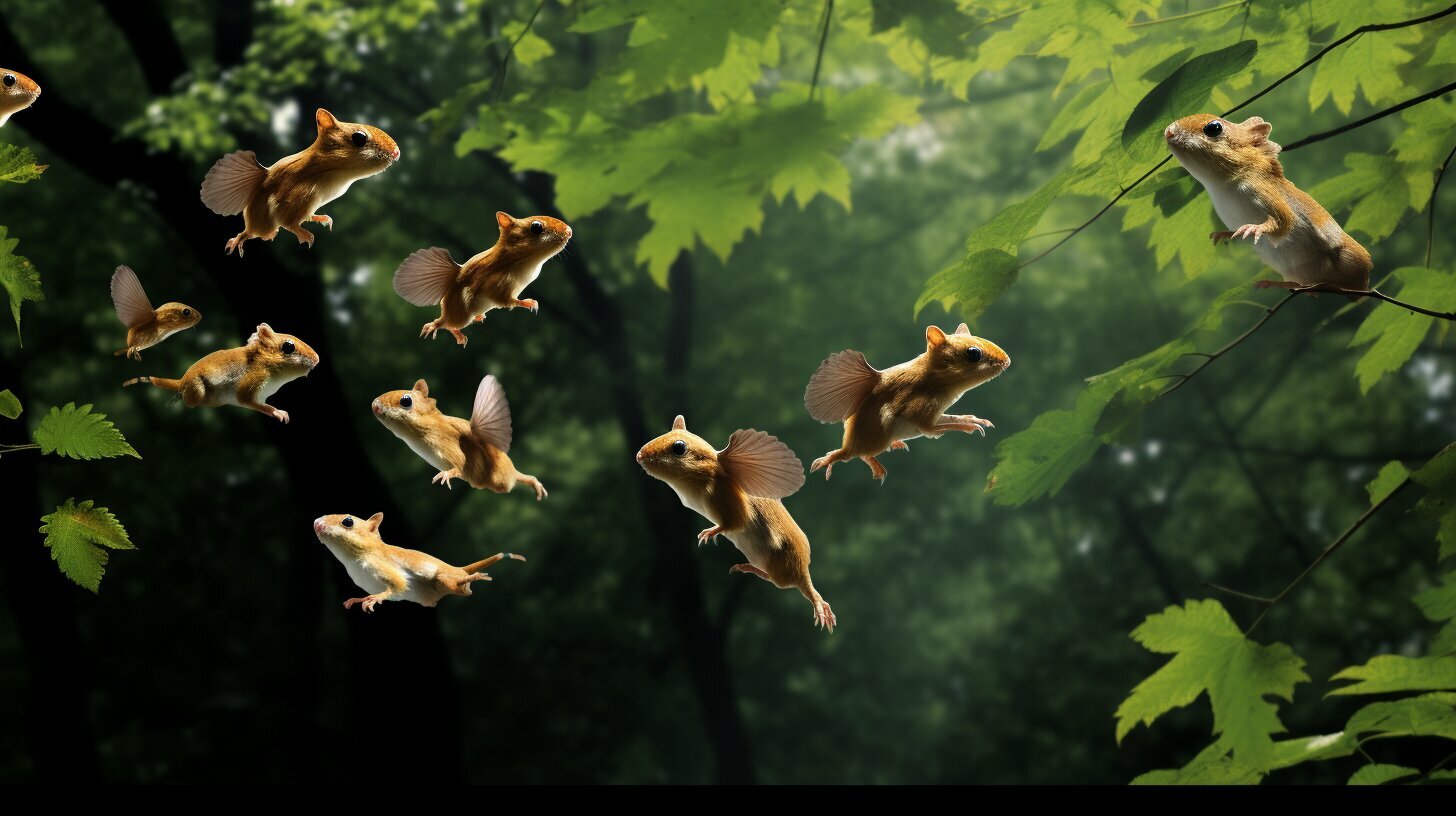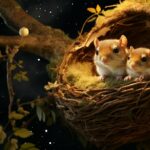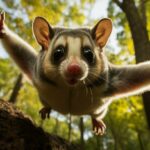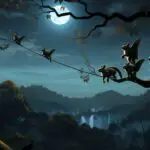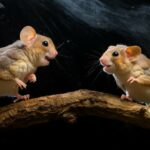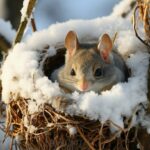Flying squirrel populations in the United States have been subject to various trends and factors that impact their numbers and distribution. Understanding these population trends is crucial for effective conservation management. In this article, we will delve into the different factors that affect flying squirrel populations, examine population studies conducted in Finland and the Pacific Northwest of the US, and explore the home range and survival of southern flying squirrels in west-central Illinois. By analyzing these insights, we can gain a better understanding of the challenges faced by flying squirrels and the conservation efforts needed to protect their populations.
Key Takeaways:
- The immigration rate is one of the key demographic rates correlated to annual population growth in Siberian flying squirrels.
- Population growth in flying squirrels is density dependent, meaning it varies based on the density of the population.
- Habitat fragmentation and reduced availability of overstory trees can lead to lower population densities and local extinctions in flying squirrel populations.
- Home range sizes are similar for male and female southern flying squirrels, and their estimated survival rate is around 71%.
- The conservation of flying squirrel populations requires considering the effects of habitat productivity and fragmentation.
Factors Affecting Flying Squirrel Populations
Several factors play a crucial role in shaping the population trends of flying squirrels, leading to both growth and decline in their numbers. Understanding these factors is essential for effective conservation management. Demographic rates, such as birth rates, death rates, and immigration, can significantly influence population growth or decline.
A study conducted in Finland focused on Siberian flying squirrels and found that immigration was the demographic rate most correlated to annual population growth in two nest-box breeding populations. This suggests that the influx of individuals from other areas plays a significant role in increasing the number of flying squirrels within a population.
Population growth was also found to be density-dependent in both populations. When population density is low, there is usually more space and resources available, allowing for increased reproduction and survival. However, as population density increases, competition for resources intensifies, leading to reduced reproduction and survival rates.
Another important factor affecting flying squirrel populations is habitat fragmentation. A study conducted in the Pacific Northwest of the US revealed that fragmented forests with reduced availability of overstory trees can have detrimental effects on population densities and even result in local extinctions. Flying squirrels rely on large, continuous forest areas for their habitat and require specific tree species for nesting and food sources. When these habitats become fragmented, their ability to disperse, find suitable mates, and access resources is compromised.
| Factors Affecting Flying Squirrel Populations | |
|---|---|
| Demographic Rates | Birth rates, death rates, and immigration |
| Habitat Fragmentation | Reduced availability of overstory trees |
| Density Dependence | Competition for resources at higher population densities |
In west-central Illinois, a research study focused on southern flying squirrels and examined their home range use, spatial activity patterns, and annual survival rates. It was found that home range sizes were similar for males and females, indicating that both genders require sufficient space for their activities and resource acquisition. The study estimated the annual survival rate of southern flying squirrels to be approximately 71%.
These findings highlight the effects of habitat productivity and fragmentation on flying squirrel populations. The availability of suitable habitats with abundant resources is crucial for their survival and successful reproduction. Conservation efforts should focus on preserving and restoring large, continuous forest areas, minimizing habitat fragmentation, and promoting sustainable management practices.
Flying Squirrel Population Studies in Finland
A study conducted in Finland shed light on the population analysis and growth of Siberian flying squirrels, revealing the importance of immigration and density-dependent factors. The research focused on two nest-box breeding populations and found that immigration was the demographic rate most correlated to annual population growth. It was observed that the arrival of new individuals from other populations played a significant role in sustaining population numbers.
Furthermore, the study revealed that population growth was density dependent in both populations. As the squirrel density increased, the population growth rate decreased, indicating that competition for resources may limit population size. This highlights the delicate balance between population density and available resources for these fascinating creatures.
The findings from this study provide valuable insights into the factors driving flying squirrel population growth. By understanding the importance of immigration and density-dependent factors, conservation efforts can be better informed. It emphasizes the need to preserve suitable habitats that support the dispersal and establishment of new populations, ensuring the long-term survival of these unique creatures.
| Population Growth Factors | Correlation |
|---|---|
| Immigration | Strong |
| Density-dependent factors | Significant |
Habitat Fragmentation and Genetic Diversity in Flying Squirrels
In the Pacific Northwest of the US, researchers investigated the effects of habitat fragmentation and genetic diversity on the population densities and local extinctions of flying squirrels. The study revealed the significant impact that fragmented forests with reduced availability of overstory trees can have on these small mammals.
Fragmentation of their natural habitat disrupts the flying squirrel’s ability to find suitable nesting sites, forage for food, and move throughout their range. As a result, population densities can decrease, leading to local extinctions in certain areas. This highlights the urgent need for conservation efforts to address habitat fragmentation and protect the connectivity of forested areas.
Furthermore, the study found a correlation between genetic diversity and population health. Decreased genetic diversity can make populations more vulnerable to environmental changes, diseases, and other threats. Ensuring a healthy level of genetic variation is crucial for the long-term survival and adaptability of flying squirrel populations.
Table 1: Factors Affecting Flying Squirrel Populations
| Factors | Impact |
|---|---|
| Habitat Fragmentation | Decreased population densities and local extinctions |
| Reduced Availability of Overstory Trees | Limited nesting sites and foraging opportunities |
| Genetic Diversity | Enhanced population resilience and adaptability |
By addressing these factors affecting flying squirrel populations, conservation efforts can help ensure their continued existence and contribute to the overall biodiversity and health of our ecosystems. Protecting and restoring their fragmented habitats, promoting connectivity between forested areas, and promoting gene flow among populations are essential steps towards safeguarding these fascinating creatures.
Home Range and Survival of Southern Flying Squirrels
In west-central Illinois, an extensive research project shed light on the home range behaviors and survival rates of southern flying squirrels, offering valuable insights for their conservation. The study focused on understanding the spatial activity patterns, home range sizes, and annual survival rates of these fascinating creatures.
Spatial Activity Patterns:
The research revealed that southern flying squirrels exhibited nocturnal behavior, with peak activity occurring during the early evening and midnight hours. They displayed a preference for densely forested areas with a mixture of tree species, especially those with cavity potential for nesting. This finding highlights the importance of maintaining suitable forest habitats to support their natural behavior and population dynamics.
Home Range Sizes:
The study found that both male and female southern flying squirrels had similar home range sizes, covering an average area of approximately 1.5 hectares. Within their home ranges, they utilized multiple nest sites, such as tree cavities, leaf nests, and abandoned bird nests. This adaptability in nest site selection allows them to meet their varying needs throughout different seasons and environmental conditions.
Annual Survival Rates:
The research estimated the annual survival rate of southern flying squirrels in west-central Illinois to be approximately 71%. This survival rate indicates the resilience of these small mammals and the importance of suitable habitats for their long-term survival. Maintaining high-quality forest habitats, ensuring a steady food supply, and minimizing threats such as habitat destruction and predation are crucial for their conservation efforts.
In conclusion, the study conducted in west-central Illinois provides valuable insights into the home range behaviors and survival rates of southern flying squirrels. Understanding their spatial activity patterns, home range sizes, and annual survival rates enhances our knowledge of their conservation needs. Protecting and preserving their forest habitats, promoting habitat connectivity, and implementing suitable management practices are essential for maintaining healthy populations of these remarkable creatures.
Conclusion
Understanding the population trends of flying squirrels is crucial for effective conservation efforts, with habitat productivity and fragmentation playing significant roles in determining their numbers and distribution. Factual data has shown that the population growth and dispersal patterns of flying squirrels are important considerations for conservation management.
A study conducted in Finland focused on two breeding populations of Siberian flying squirrels and found that immigration was the demographic rate most correlated to annual population growth. Population growth was also found to be density dependent in both populations, indicating the need for sustainable habitat for these species.
In the Pacific Northwest of the US, a study examined the impact of habitat fragmentation and reduced availability of overstory trees on flying squirrel populations. The findings revealed that fragmented forests can lead to lower population densities and local extinctions, underscoring the critical role of intact habitats for sustaining healthy squirrel populations.
Research conducted in west-central Illinois on southern flying squirrels shed light on their home range use, spatial activity patterns, and annual survival rates. The study found that home range sizes were similar for both males and females. Additionally, the estimated survival rate was 71%, indicating the importance of suitable habitat for their survival.
In summary, the studies mentioned in this article provide valuable insights into the population trends of flying squirrels and emphasize the significance of habitat productivity and fragmentation. These findings can inform conservation efforts aimed at maintaining and promoting healthy populations of these fascinating creatures.
What is the Ecological Role of Flying Squirrels in US Forests?
The ecological role of flying squirrels in US forests is crucial, with researchers slowly unraveling and unveiling flying squirrel’s role in forests. As nocturnal creatures, they play a significant part in seed dispersal, promoting forest regeneration and biodiversity. Their ability to glide between trees aids in accessing food sources and creating new tree cavities, benefiting other wildlife species as well. Understanding their role is vital for ecosystem management and conservation efforts.
Can we interpret body language in flying squirrels similarly to gorillas?
Flying squirrels and gorillas have contrasting body language, making it difficult to interpret their behaviors similarly. While gorillas rely on various vocalizations, postures, and gestures, flying squirrels primarily use their body language for balance and navigation during flight. Trying to interpret flying squirrel body language using gorilla communication cues decoded may lead to incorrect conclusions due to their distinct evolutionary traits and behaviors.
FAQ
Q: What are the factors affecting flying squirrel populations?
A: Factors that influence flying squirrel populations include demographic rates, density dependence, habitat fragmentation, and availability of overstory trees.
Q: What did the study in Finland focus on?
A: The study in Finland focused on the population growth and dispersal patterns of Siberian flying squirrels.
Q: How does habitat fragmentation affect flying squirrel populations?
A: Fragmented forests with reduced availability of overstory trees can lead to lower population densities and local extinctions in flying squirrel populations.
Q: What did the research study in west-central Illinois reveal?
A: The study in west-central Illinois examined the home range use, spatial activity patterns, and annual survival rates of southern flying squirrels.
Q: What do these findings suggest for flying squirrel conservation?
A: These findings highlight the importance of habitat productivity and fragmentation in the conservation of flying squirrel populations.

